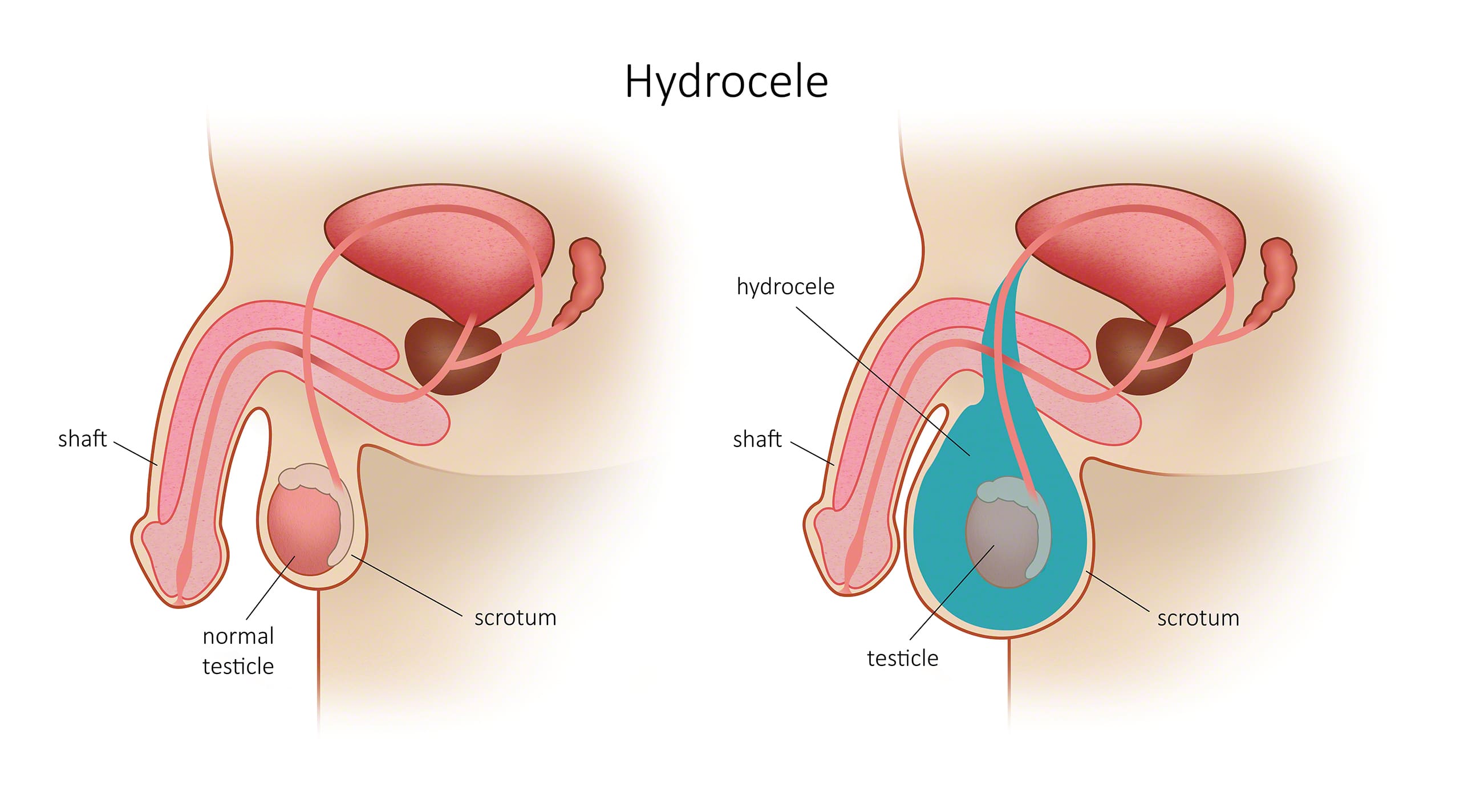A hydrocele is an accumulation of fluid surrounding the testicle. This hydrocele is responsible for a greater or lesser volume increase on one, or both sides of the scrotum. It is a benign disease that can not become infected or evolve into a more serious disease.
However, it can be responsible for discomfort, for being cumbersome during certain activities (e.g. bicycle) or for an aesthetic prejudice.
The purpose of the procedure is to restore the scrotum to a normal volume and to eliminate the symptoms for which the patient has consulted.

How is a hydrocele repair (hydrocelectomy) performed?
A drain is sometimes left in place temporarily.
Are there other treatment options to treat a hydrocele?
The treatment of hydrocele by puncture can be offered; it is though, a temporary solution since it will most likely reoccur in the following months. This treatment is generally carried out for short-term comfort, before performing definitive surgery with a surgical repair.
What are the risks and complications of a hydrocelectomy?
- Hematoma: a re-intervention to stop bleeding and drain the hematoma may be necessary.
- Delayed healing that may require prolonged local care.
- Infection: the existence of a flow through the incision, general signs of infection such as fever, or local as an inflammation of the bursa, can lead to the initiation of a suitable antibiotic treatment and the treatment of a possible absess by Dr. Marois.
- Testicular atrophy: it is of exceptional emergence after hydrocele surgery.
- Recurrence: the risk is extremely low.
When the sutures are resorbed, there may be a flow similar to pus. Take a bath every day. Shower is allowed after 24 hours and bath after 48 hours.


